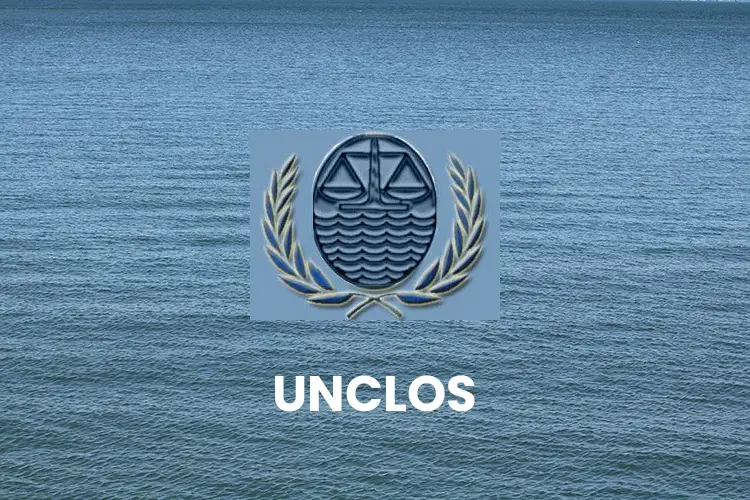What Is UNCLOS?

About UNCLOS
UNCLOS stands for the United Nations Convention for the Law of the Sea. It is also known as the Law of the Sea Treaty or the Law of the Sea Convention. It is an international agreement or treaty which establishes a regulatory framework and guidelines for using the world’s oceans and seas so as to use and conserve marine resources and to ensure the preservation and protection of all the living beings of the sea.
The treaty was signed in 1982 in Montego Bay, Jamaica, as a result of the United Nations Conference on the Law of the Sea, which took place from 1973 to 1982, and came into force in 1994.
Since around the 17th century, the seas and oceans of the earth were considered to be free. Generally, the waters beyond 3 nautical miles of coastline of a particular state are considered as international waters belonging to no one. This was called the cannon shot rule as 3 nautical miles was the distance that a shore-based cannon could reach.
In these international waters, there was no limit or boundary set for commercial activities or marine business.
Towards the second world war, many nations found that the resources of the ocean who being overexploited and there was a need to protect them. This was a result of the growing demands of people over the centuries. Some of the states even expressed their desire to extend national claims on oceans so as to protect fish stocks, to claim mineral resources, and to enforce pollution control. Thus, the international committee requested the United Nations International Law Commission to consider modifying the existing laws of the ocean.
Many countries extended their control over the natural resources of their continental shelves. These countries included the United States, Canada, Ecuador, Indonesia, Saudi Arabia, Argentina, Venezuela, Ethiopia, Egypt, Peru, Chile, etc. Some nations extended their territorial seas to 12 nautical miles while others extended them to hundreds.
The Convention has created three new institutions on the international scene :
- the International Tribunal for the Law of the Sea,
- the International Seabed Authority,
- the Commission on the Limits of the Continental Shelf.
When was UNCLOS established?
The work for a new regulatory framework began in 1949. The commission prepared 4 draft conventions. These four conventions were adopted in the first United Nations Conference on the Law of the Sea.
The first United Nations Conference on the Law of the Sea (UNCLOS I) took place from 24th February to 29th April 1958. The four conventions that it adopted are called the 1958 Geneva Conventions. These include the Convention on the Territorial Sea and Contiguous Zone, The Convention on the High Seas, The Convention on Fishing and Conservation of the Living Resources of the High Seas, and The Convention on the Continental Shelf.
However, these conventions could not successfully establish a maximum breadth of the sea.
The second United Nations Conference on the Law of the Sea (UNCLOS II) was held from 17 March to 26 April 1960. No International agreements were established at this conference and hence the problem of not being able to fix a maximum breadth persisted.
The third United Nations Conference on the Law of the Sea (UNCLOS III) took place from 1973 to 1982 which end addressing all of the issues of the previous conferences which have remained unsolved. This conference on the participation of more than 160 Nations. The nine yearlong conventions finally came into force on 14 November 1994 after ratification by 60 states.
Role of UNCLOS
The convention defines several maritime zones namely the baseline, the territorial waters, the contiguous zone, the exclusive economic zone, the continental shelf, the international seabed area, and archipelagic waters.
The Exclusive Economic Zone or EEZ are the waters that can be accessed and utilized by any country for economic purposes.
UNCLOS is currently completely binding and the prevailing law of the sea. It has 17 parts, 320 articles, and 9 annexes. The UN does not play any major role in the working of this convention. It has 160 member states. An important part of maritime law, International Maritime Organisation was formed in 1948 and became active in 1959.
Other important Maritime organizations are the International Whaling Commission or the International Seabed Authority. The International Union for Conservation of Nature (IUCN) is another partner organization of the UNCLOS.
UNCLOS has played an important role in maintaining international maritime peace and harmony ever since it was established. Protection for marine resources has increased extensively and conditions are much better than they were in the 1960s or 70s. UNCLOS has also helped to safeguard marine resources and conserve plant and animal life in the oceans.

